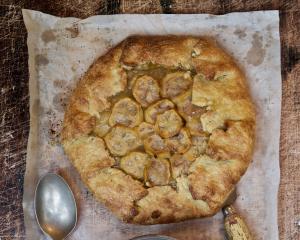

It is very common to use anchovies as a layering of flavour. They melt down into the base of the sauce and give it a depth of saltiness and that all important umami magic.
You want to use a pasta that has a twist, like fusilli or casarecce, so that the sauce clings to the pasta. I also like to use up old bread to make pangritata for added crunch and flavour.
Serves 4
Skill: easy
Total time: 45 minutes
Ingredients
400g pasta, fusilli or casarecce
Olive oil
1 medium leek (200g), cut into medium sized rounds
1 small cauliflower (400g) cut into small florets
6 anchovies
10 leaves fresh rosemary, finely chopped
2 cloves garlic, crushed
Pinch chilli flakes
Handful fresh parsley, roughly chopped
60g freshly grated parmesan cheese
Extra virgin olive oil for serving
Pangritata
2 Tbsp olive oil
200g day old bread, coarsely grated
1 clove garlic, crushed
¼ cup parsley
1 lemon, zest
Sea salt flakes and freshly ground black pepper
Method
Begin by making the pangritata; in a fry pan, add the oil and gently fry over moderate heat until bread crumbs become crisp and golden. Add the garlic and continue to cook for a further 2 minutes.
Remove from the heat and add the parsley, lemon zest and seasoning. Set aside.
To make the pasta
Place a large pot of salted water on to boil. Cook the pasta as per directions on the packet.
Add the oil to a large fry pan and over moderate heat add the leeks and cook for a couple of minutes, add the cauliflower and anchovies and saute so the anchovies melt into the oil and the cauliflower becomes a delicious golden colour (you want the cauliflower to be tender but not overcooked).
Add the garlic, rosemary and chilli and continue cooking for a further 3-4 minutes.
Drain the cooked pasta, and add the pasta to the cauliflower and toss to combine; add the parsley and parmesan.
Season with salt and cracked pepper. Drizzle over a little more oil and adjust seasoning if necessary.
Serve with a generous scattering of pangritata over the pasta.












